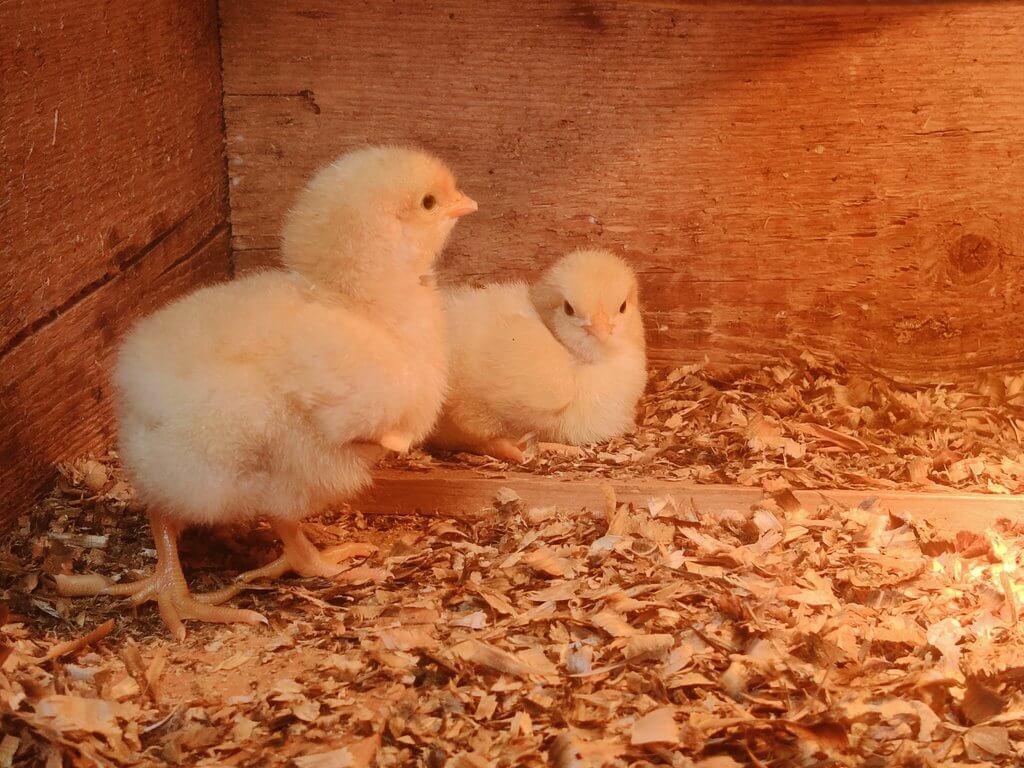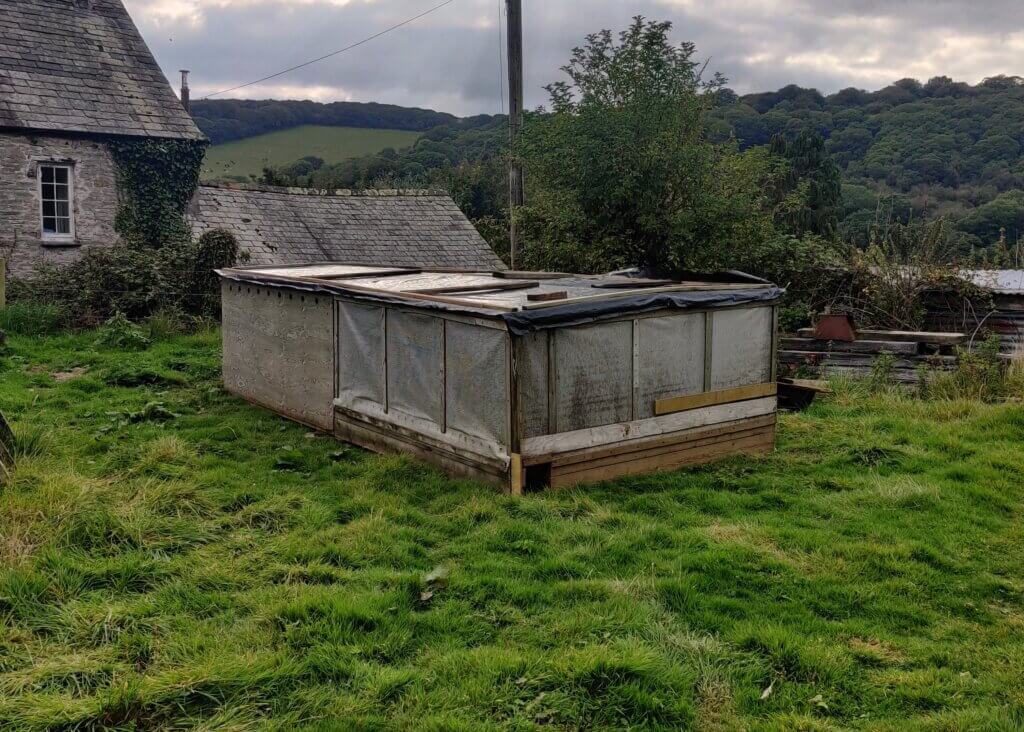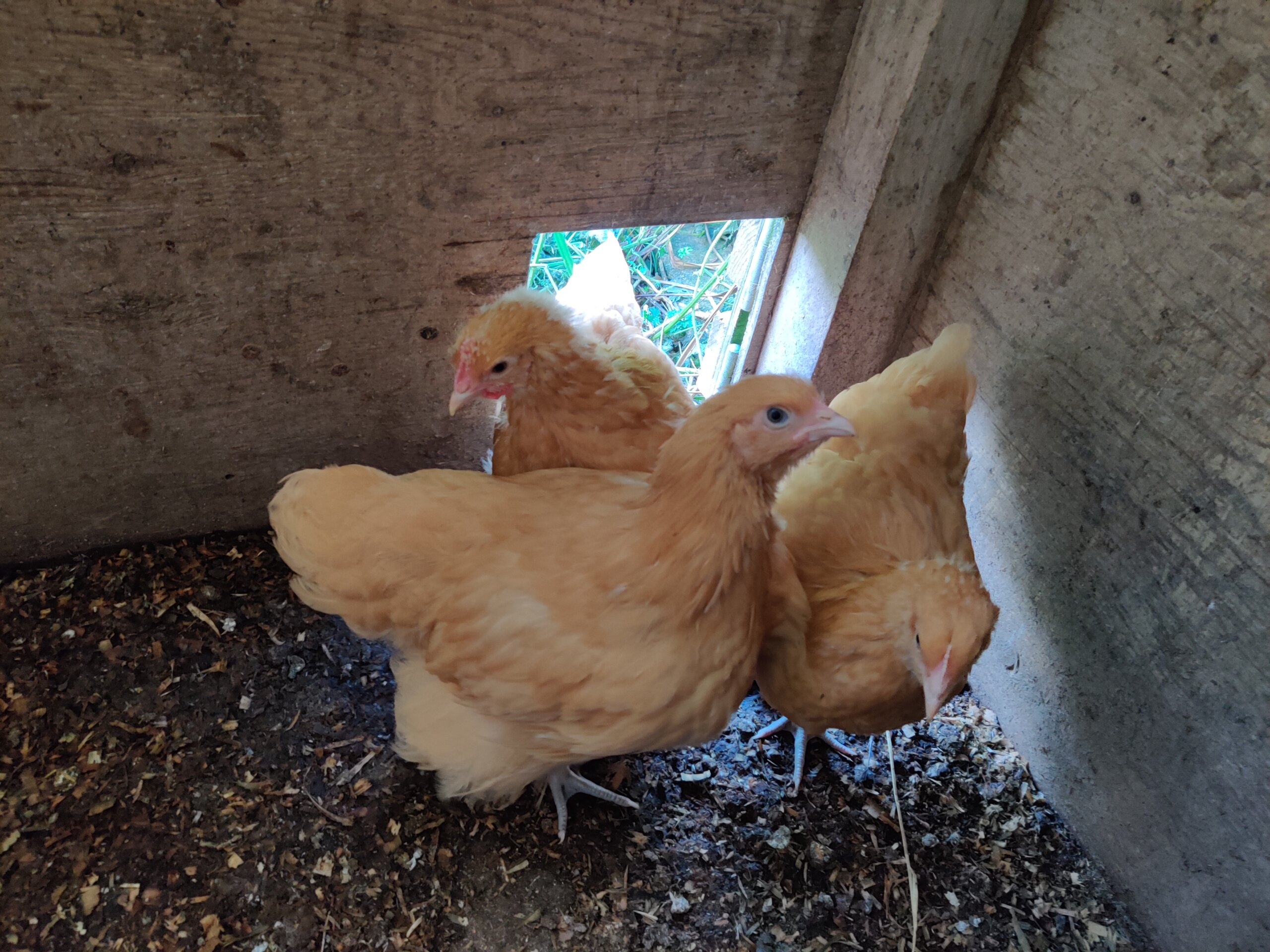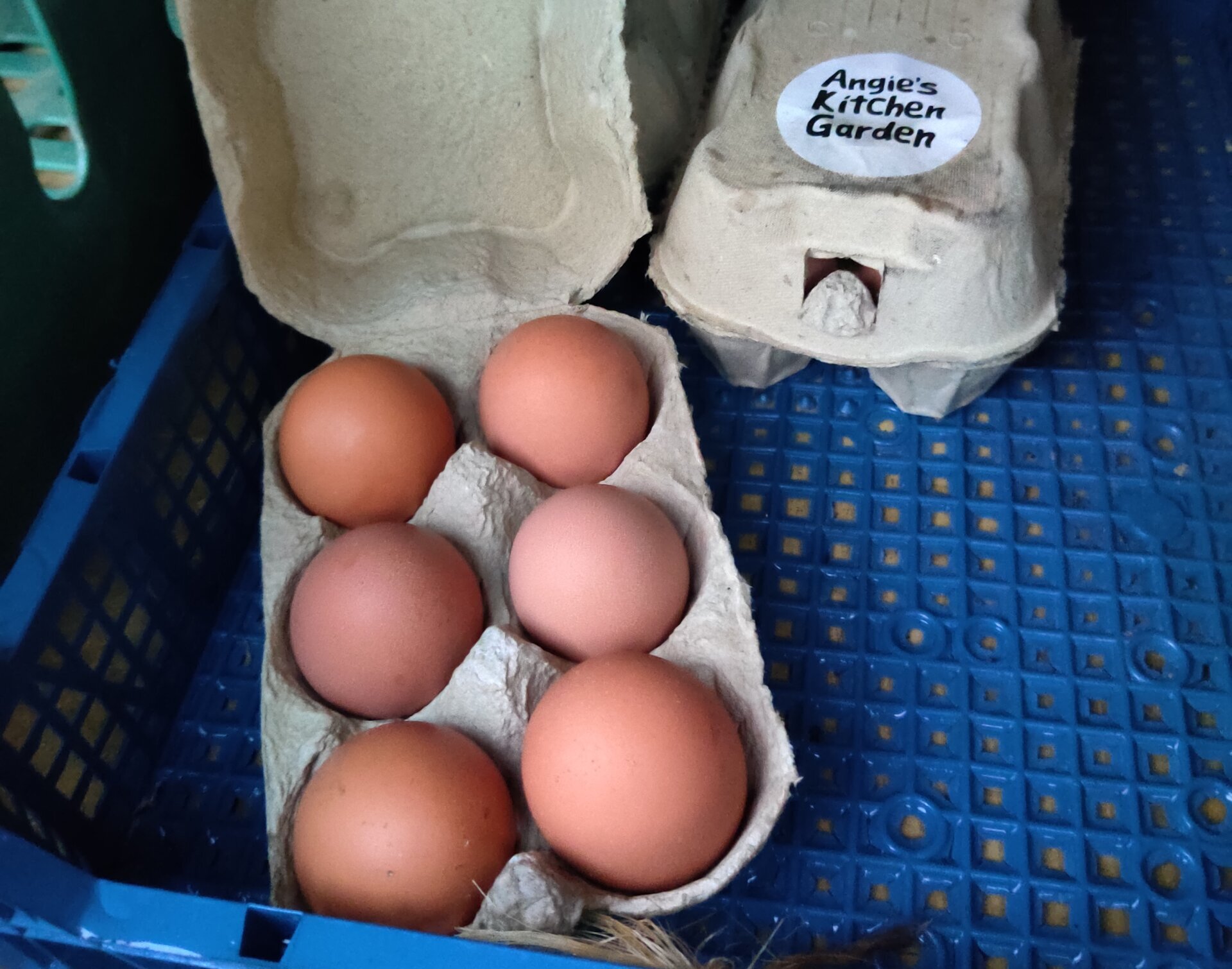Earlier in the year, I concluded it was scandalous that we, a farming family, didn’t have any chickens. After some research and investing in an incubator, I was ready to start my own flock. I had a simple plan, but everything changed once I took a look at the economics of homegrown chickens.
Where were our chickens?
Of course, our farm had chickens in the past. Mum had a small flock of laying hens for several years. However the hens were never replaced with younger ones, and the last of these baron grannies died last year. This year, I’ve acted on my interest in keeping chickens, taking inspiration from how we raise pigs on the farm.
As with all livestock, you can easily get started without keeping breeding stock. By simply buying young, such as weaned calves, lambs or piglets, and raising them to finishing age, you can provide meat for the freezer without any further commitments after slaughter.
We already do this on our farm with the pigs; buying in a small batch of ‘weaners’ and keeping them for a short time before they are ready for slaughter. I decided I would do the same for chickens; raise a small batch of broilers, put them in the freezer and learn from the experience.
Hatching a plan
First thing’s first, I needed to get my young stock from somewhere. A commercial hatchery would never deal with someone as small-fry as me, so I had to look to local breeders for options.
Chicken breeds generally fall into one or more of the following categories: Layer (eggs), Broiler (meat), Dual Purpose (eggs and meat) and Ornamental (for show / appearance). Layers are very easy to come by locally, however broilers and dual purpose are harder to find. Options were either limited or non-existent. As a rule of thumb, day-old chicks are available for £5 each. Batches of hatching eggs (i.e. fertilised eggs laid by a hen that’s with a cockerel), are available for about £2 per egg and upwards.
I wound up turning to eBay, where hatching eggs are readily available. Prices can be steep though, as sellers often overstate the value of their eggs. As eggs can be shipped from anywhere and chicks cannot be sent, I had access to a wider range of breeds and, in theory, could make a saving by hatching my own chicks. After some research, I opted to purchase Buff Orpington hatching eggs; a Dual Purpose breed.

Buff Orpington chicks
Trying to crack incubation
Unfortunately, hatch rates were not great with shipped eggs. There can be all sorts of reasons for this. With the eggs themselves, there’s no guarantee of fertility and going through the postal system is not ideal for the eggs. I’ve never received a broken egg, but it’s possible an egg’s viability is ruined by shipping.
In addition, incubating is not a straightforward process. Whilst I have an incubator that sets the temperature and turns the eggs automatically, it’s down to me to control the humidity and manage the eggs. I can’t say I’ve mastered this process yet, and it’s going to take more practice.
I have just finished incubating my fourth batch of eggs. All batches comprised 12 eggs. Below is a summary of how (un)successful these hatchings were;
- 3 hatched, 3 unhatched, 6 infertile
- 3 hatched, 6 unhatched, 3 infertile (1 hatched chick died)
- 1 hatched, 6 unhatched, 5 infertile (1 hatched chick died)
- 5 hatched, 6 unhatched, 1 infertile (2 hatched chicks died)
‘Hatched’ means a chick successfully hatched from the egg. ‘Unhatched’ means an embryo grew but aborted at some stage. ‘Infertile’ means the egg didn’t grow anything and was likely not fertile. Sadly, losses are part and parcel of hatching and some chicks may die soon, or even a few days, after hatching.
Feed and housing
In addition to acquiring them, I also have to feed and house my chickens. Fortunately we already had a chick brooder (special pen for chicks) on the farm. We also had a hen-house for them ready for when they were fully grown.
Feed costs are fortunately pretty low. A 20kg bag of chicken or chick feed is anywhere between £7 and £9. There’s also the added benefits that these feeds are specially mixed to achieve the right blend of nutrients.

One of our second-hand pheasant rearing pens
Earlier in the year, I also had the good fortune of winning three pheasant rearing pens at auction. These are essentially 18ft pens that work just as well for chickens with just a couple of modifications.
Whilst feed costs are proving acceptable, I’m able to supplement feed with waste vegetables from my market garden. It’s important this doesn’t replace their main ration, but chickens love to peck at a head of cauliflower to pass the time.
Economics of homegrown chickens
My goal is to raise chickens for meat. However, this shouldn’t be pursued at all costs. Ultimately, I have to bear in mind that a small whole chicken is around £4 on the supermarket shelf. Although my chickens would be equivalent to a free range chicken for around £9. So how does the economics of homegrown chickens look?
Ultimately, it’s hard to ignore that a day-old chick at £5, costs more than a cheap, whole chicken. And remember, that whole chicken is reared and ready to eat! With time and feed, I could probably raise a chicken for the same price as a free range chicken, but the time and work involved makes it hard to see any saving.
Incubating eggs at £2 each should prove cheaper, however an unsuccessful hatch throws a spanner in the works. The more successful the hatch, the more cost effective this is. If the cost of 12 eggs divided by the number of chicks hatched is less than £5 per chick, then this is a worthwhile hatch. I’d originally planned to simply raise a batch of chicks. The cost of eggs and unsuccessful hatches mean I’ll now keep my hens as a small breeding flock so I can produce my own hatching eggs.
Reducing the cost of incubating eggs is essential, so I’ll need to incubate my own eggs in future. Buff Orpingtons, like most meat breeds, are not frequent layers. At their peak, they should lay an egg every other day. Fertile eggs are viable for around 4-7 days, so filling the incubator will be a big ask for my Buff Orpingtons. This means the number of chicks in each hatch probably won’t increase, but I’ll be incubating fewer eggs at no cost.

Young Buff Orpington chickens that will be a part of a small breeding flock
Spreading our wings
Since I acquired more chicken housing, I’ve purchased some layer hens. I’ve started selling their eggs alongside my vegetables that grow in the market garden. This has proven pretty eye opening as eggs are a good seller, offering a direct route to recouping my costs.

Half a dozen free range eggs for sale
The hens themselves cost £6.50 each. I’m able to sell a box of six eggs for £1. Each chicken, once up and running, will lay almost an egg a day, so it’s simple enough to imagine that after a couple of months, the chickens should pay for themselves.
It’s easy to see how small a small flock of layers is far more economically sound than trying to raise meat birds. Furthermore, it’s acceptable to sell eggs directly to the public over the farm gate, however selling home-butchered meat is not allowed. Ultimately, I’ll be counting on egg sales to recoup my meat bird costs. Thanks to laying hens, I’m getting to grips with the economics of homegrown chickens.